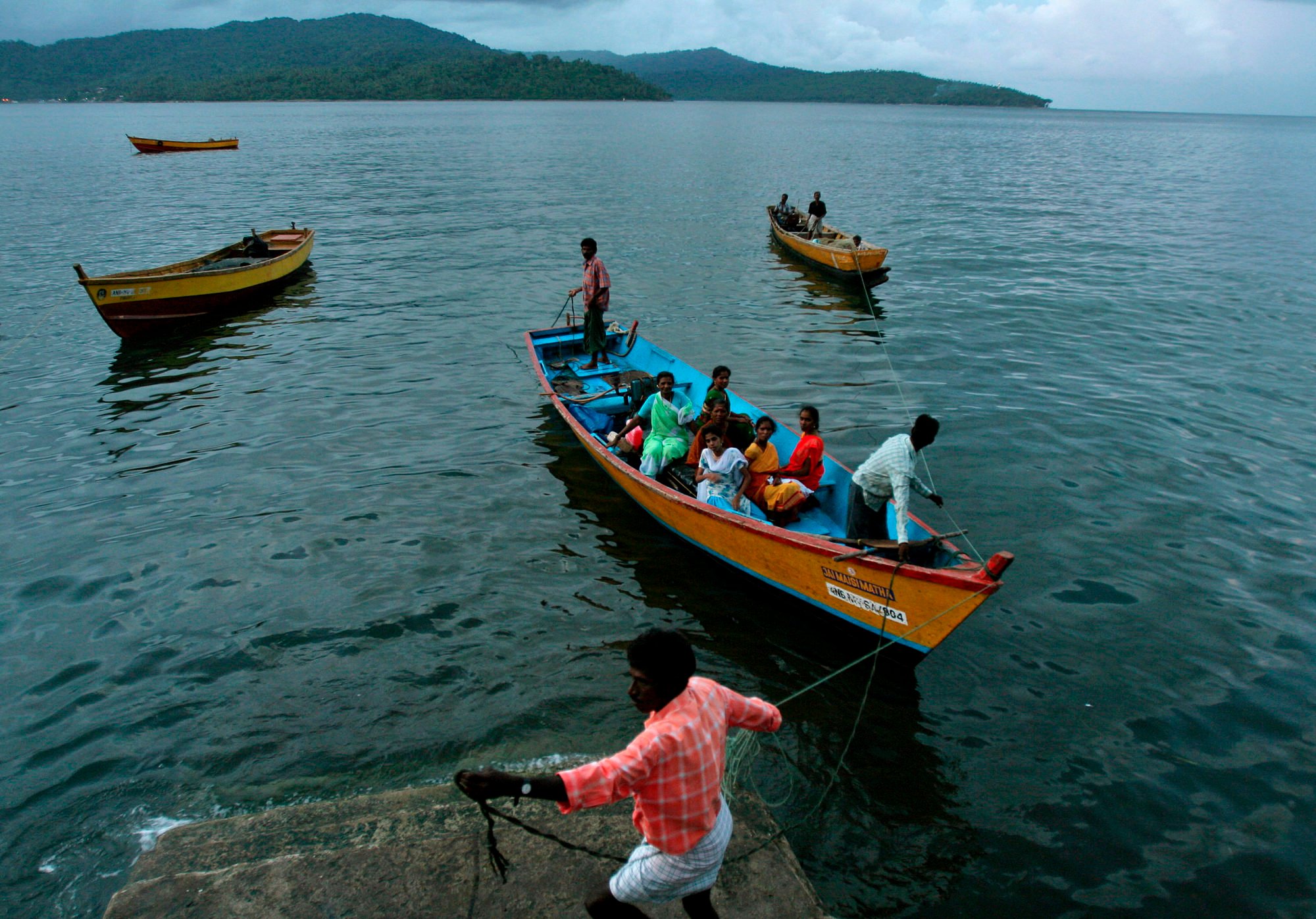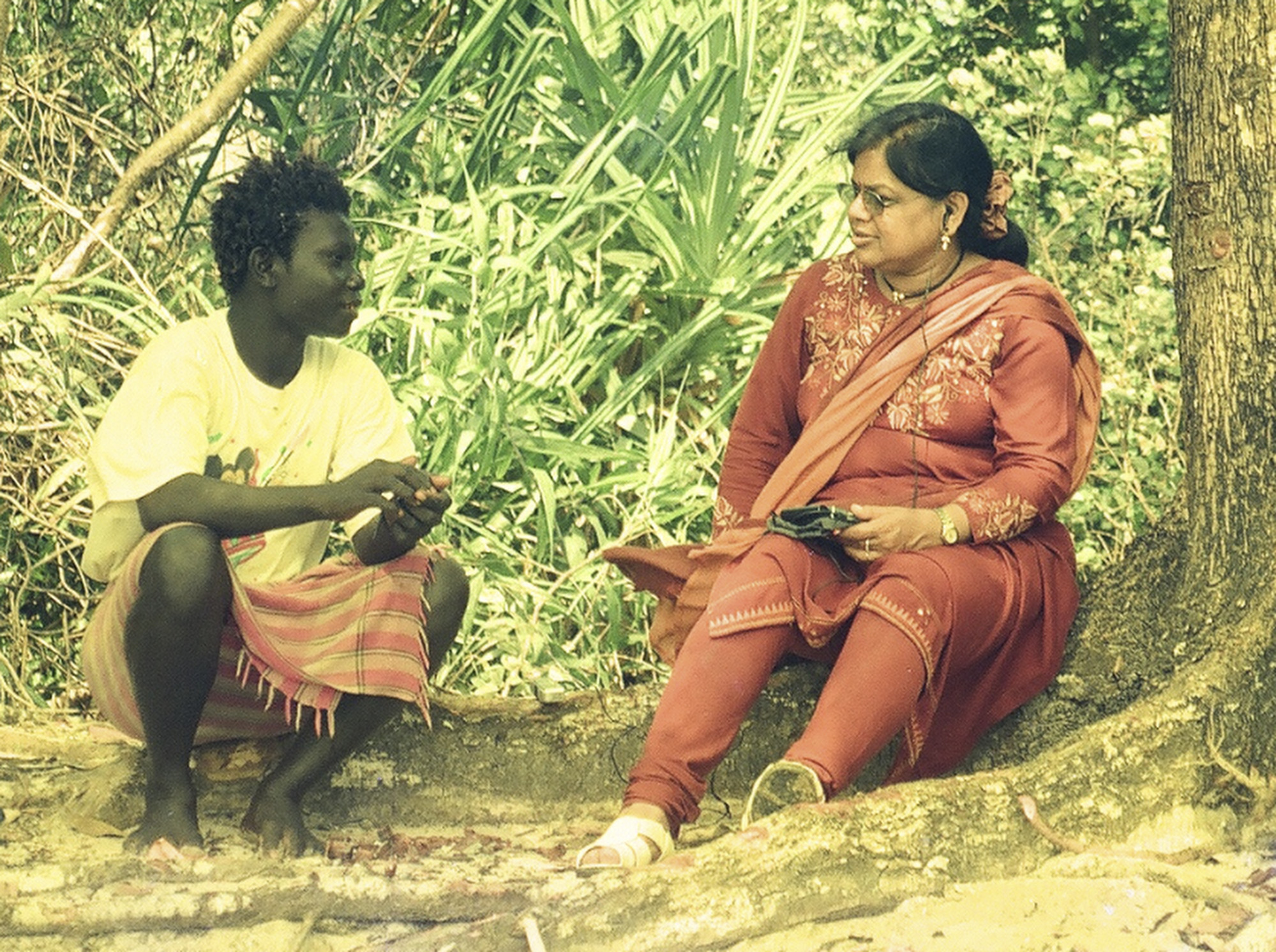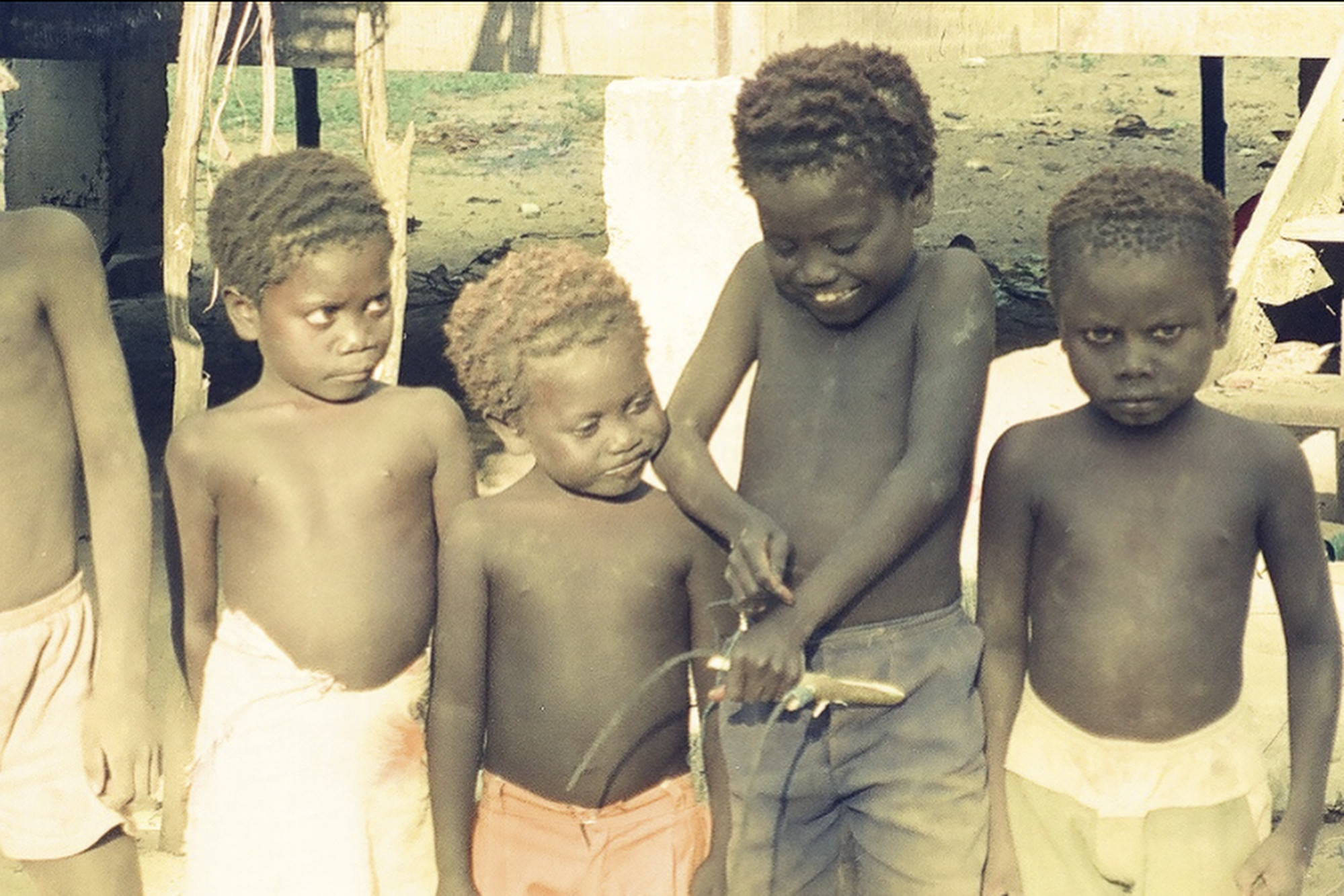Dying voices: India’s remote Great Andamanese tribe risks losing its identity, language and traditions

[ad_1]
Only three people in Techa’s tribe currently speak Jero.
Of the six tribes, the Great Andamanese have had the closest interactions with Indian mainlanders, which has adversely affected their grasp on their own language, traditional lifestyle and culture over the decades. The tribe now has only 57 registered members.
In 2001, when New Delhi-based linguist Anvita Abbi first arrived at the archipelago, she found the Great Andamanese community was speaking Hindi.
Abbi, who has worked on around 100 Indian languages, said the obscurity of the Great Andamanese language, inaccessibility of the islands and their peoples posed a challenge that drew her towards one of the oldest living civilisations of the world.

Abbi started learning about their language – a mix of Jero, Sare, Bo and Khora – and a decade later, was able to produce the world’s first-ever pictorial interactive dictionary of it, using Roman and Devanagari scripts and phonetic transcription of 6,000 words.
The dictionary is available in English, Hindi and Great Andamanese.
In 2013, Abbi decoded the language’s grammar as well.
“No other language has a grammar based on the human body or shares cognates with the Great Andamanese language family – words that are similar in meaning and pronunciation, indicating a genealogical connection,” said Abbi, now 74.
“The grammar suggests that the language family originated at a time when human beings conceptualised their world through their bodies.”
Abbi said the last people to fluently speak Bo, Khora and Sare had died within the past 13 years, and Jero could now be next.
“Jero may go extinct soon because its three speakers are above 50, and they suffer from several ailments,” said Abbi, whose books include Voices from the Lost Horizon: Stories and Songs of the Great Andamanese and Birds of the Great Andamanese: Names, Classification and Culture, offering insights into the area’s cultural history and avian life.
Coronavirus hits India’s Great Andamanese tribe, which has just 53 members
Coronavirus hits India’s Great Andamanese tribe, which has just 53 members
Abbi spent months with the tribe and said its members had tried hard to retrieve words and phrases from memory, but years of interaction with Indian mainlanders had reduced their grasp on their own language and traditions.
Despite this, Abbi managed to put together the dictionary and grammar guide, and also collected more than 150 Great Andamanese names for different species of fish and 109 for birds.
Abbi said she hoped the younger generation in the community could learn to keep their traditions, customs and language alive.
“They must retain their identity, they don’t know what they have lost,” she said.
Yet according to the tribe’s elders, few among the younger generation are interested in language preservation, she said, since communicating with mainlanders in Hindi and English is more important to them.

Abbi has called on the Indian government to seek help from the three surviving Jero speakers to teach the language in schools and boost interest among young people in preserving the tribe’s language and traditions.
“This is the only way the government can change the mindset of the locals who think they speak a junglee [uncivilised] language,” Abbi said.
Shivappa A Awaradi, a former director of tribal welfare in the Andaman and Nicobar Islands, said tribal children studying in schools on Strait Island in North and Middle Andaman had been given introductory material to familiarise them with the various indigenous languages.
“This was one of the primary steps to retain the tribal language, but the preservation of ethnic language is the next step that involves a multidisciplinary approach,” he said.
In 2018, Awaradi submitted a proposal to the government to preserve the endangered tribal languages, suggesting among other approaches the use of tribal language in school textbooks and getting linguists on board to help with preservation efforts. But he said no action had been taken on his proposal so far.

The gradual loss of their cultural identity is not the only problem facing the Great Andamanese.
Increased interaction with Indian mainlanders and British colonists since the 18th century also exposed the tribe to diseases such as measles, pneumonia and tuberculosis, for which they have little or no immunity, according to Awaradi.
The first recorded interaction that the tribes had with the British took place in 1789, when the latter attempted to set up a naval base and penal colony on the Andamans but were thwarted by malarial outbreaks and tribal resistance.
According to Abbi, roughly 8,000 Great Andamanese people were living on the Andaman and Nicobar archipelago with no contact with the outside world until 1858 – the year Britain established a penal colony in Port Blair, now the capital city of the Andaman and Nicobar Islands.
British scholar Clare Anderson in a 2011 article wrote the British had set up a detention institution called Andaman Home, where they kept the captured indigenous islanders who were handcuffed, beaten and forced into productive labour by making them dependent on tobacco and rum
Why the world should stay away from India’s mysterious Sentinel tribe
Why the world should stay away from India’s mysterious Sentinel tribe
Women were sexually abused and many of them gave birth to children fathered by settlers, though the “archives are silent on whether they were convicts, naval brigadesmen or British officials”, the paper said.
Abbi said colonisers also brought in a variety of pathogens, to which the formerly isolated hunter-gatherers had no immunity. By the 1960s, syphilis and other diseases had reduced the number of Great Andamanese to a mere 19.
Soon after India became independent in 1947, the Indian government tried to resettle the tribe on Bluff Island in the North and Middle Andaman district. The first attempt in 1949 failed but two decades later, the tribe was moved to Strait Island in the archipelago, Awaradi said. Over the years, many intermarried with non-tribal people and the government admitted their children to school, where they learned Hindi and English.
Gradually, the Great Andamanese adopted a more sedentary lifestyle and took to Indian staples such as rice, lentils and samosas. Some took on government jobs, with official data showing 25 Great Andamanese employed by the authorities.

All Great Andamanese people receive help from the government, spanning food rations, clothing, housing, power and water. They also get cash incentives of 5,000 Indian rupees (US$60) for the birth of each child and for carrying out last rites on the death of a member of the tribe.
Despite receiving medical care from the government, many among the Great Andamanese suffer from alcoholism and liver failure, according to Awaradi.
This has strengthened Techa’s resolve to help “serve the community” by becoming a doctor, and in time, the preservation of her tribe’s language and customs.
The problems faced by the Great Andamanese could be a harbinger of things to come for another indigenous tribe, the Shompen, whose 242 members live on Great Nicobar in the archipelago.
The Shompen could be wiped out if the Indian government goes ahead with plans to build an airport, power plant and tourism hub on Shompen land, said Callum Russell, Asia research and advocacy officer of indigenous rights group Survival International.
“Like the Great Andamanese, the Shompen will not survive the catastrophic assault either,” Russell said.
[ad_2]
Source link





